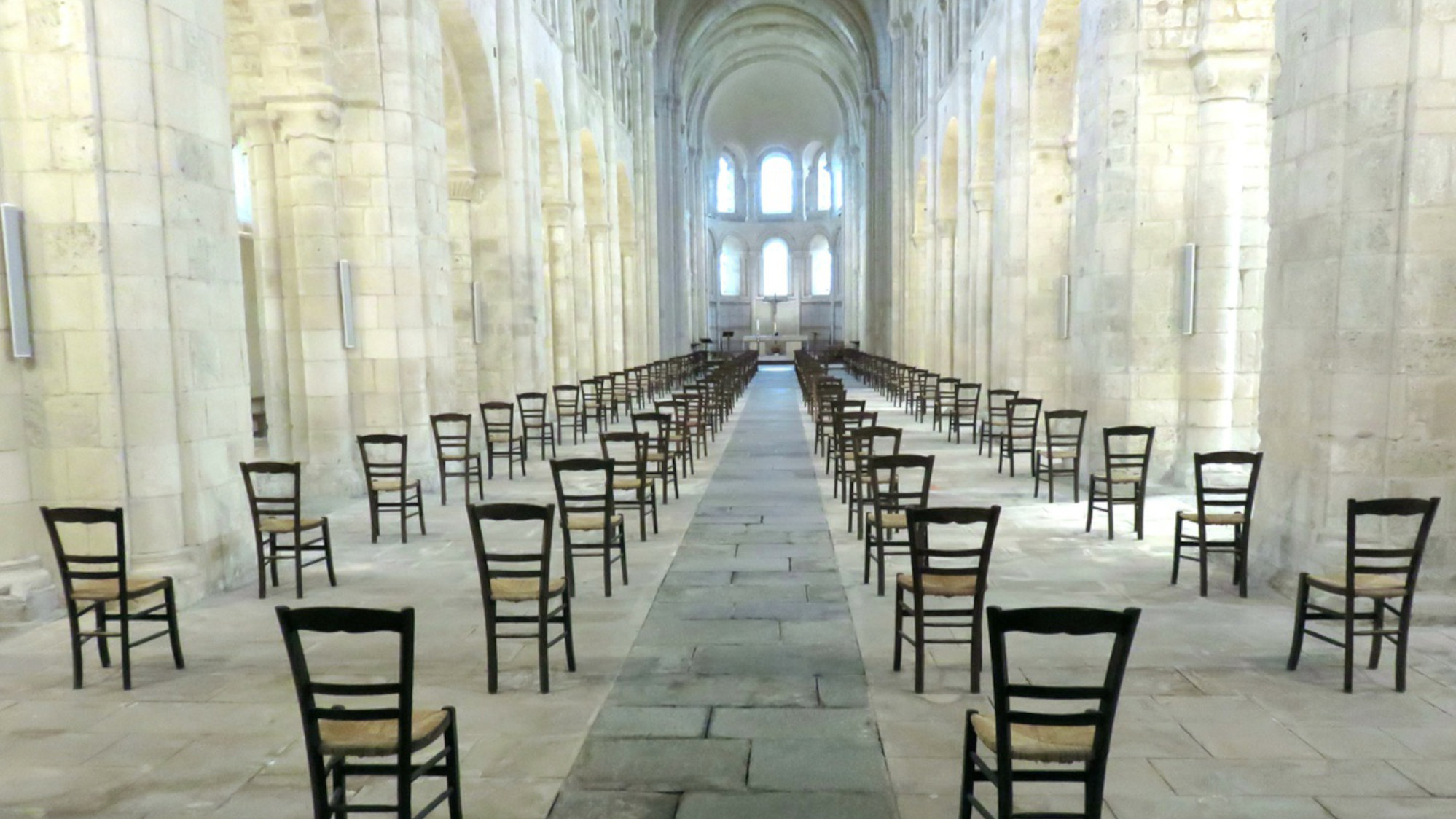
© S / Adobe Stock
Religion and the Pandemic
How COVID-19 Has Changed Religious Organizations
Easter in 2020: Instead of celebrating the Easter Mass with ten thousand believers, the Pope celebrated with only a few clerics. Elsewhere, digital streaming options flourished. An Easter service from the US-based Lakewood Church attracted over 195,000 views on YouTube alone. At the time, it was neither possible to predict how long the pandemic would last nor which social and ethical debates would arise from it. Now, it is time to look back: How did religious organizations position themselves in the discourse about health and disease, such as the issue of vaccination? What was the relationship between religious communities and national governments? And what role did online services play in the realm of faith? These are the questions being addressed by the RECOV-19 project.
Ten researchers from four countries are analyzing how the pandemic has affected religious life in Germany, Poland, Russia and Belarus, Ireland and Northern Ireland, and Canada. “On the one hand, these countries have a lot in common. For example, Christianity is the dominant religion in all of them,” says Kerstin Radde-Antweiler, professor of religious studies, who is leading the German project team.
On the other hand, it’s precisely the differences between the countries that makes it interesting to compare them. Canada and Germany are considered particularly secular countries with a large number of different religious communities. By contrast, in Poland, Ireland/Northern Ireland, Belarus and Russia, faith and religion play a much greater role, while at the same time, these countries have a greater religious homogeneity. The countries also varied widely in terms of government restrictions on religious practice during the pandemic.
From Media Evaluation to Interviews
The team began its research in 2022, supported over a three-year period by the Trans-Atlantic Platform for Social Sciences and Humanities (T-AP). The researchers, most of whom have backgrounds in sociology and religious studies, are pursuing different methodological approaches. Among others, they analyze the publications of the various religious organizations. “These include the organizations’ websites, but also religious publications; in Germany, for example, the katholisch.de website or the Protestant Chrismon magazine,” explains Radde-Antweiler. In addition, the researchers are currently conducting interviews with various groups of people. They spoke to religious leaders, ordinary parishioners, and media representatives from various religious publications. For each country, the researchers look at the largest religious organizations; in Germany, the Roman Catholic Church and the Protestant Church in Germany (EKD). They are also going to look at smaller communities; in Germany, at Muslim communities, and the Anthroposophical Society. Although the latter is not a religious group, it is recognized as a worldview and plays a role particularly in the education and health sectors.
“Many Did Not Miss Their Church Community”
One of the first things Radde-Antweiler came to realize about the situation in Germany was that, “Many members of the two main churches hardly missed their congregations during the pandemic.” The willingness to pay for church membership and to get involved continued to decline during this time. This was not only because of the pandemic. Other factors, such as the discovery of cases of abuse, contributed to an increasing amount of people turning their backs on the churches.
The secularization of society continued during the pandemic. Some of the research team’s findings seem to suggest that the churches themselves became more secularized. “We found that the two main churches in Germany hardly interpreted the pandemic in religious terms,” says Radde-Antweiler. Religious media mostly made general appeals for charity and called on people to comply with measures. Specific religious interpretations featured mainly in academic theological discussions.
However, this more secular interpretation was specific to churches in Germany. In other countries, Orthodox or Roman Catholic theologians often referred to the sinfulness of the world to explain the emergence of the pandemic. The Anthroposophical Society in Germany argued along similar lines: The transgressions of modern societies had caused the pandemic in the first place.
Why Online Worship Services Didn’t Last
What almost all religious organizations agreed on, however, is the need to move quickly to digital services during the pandemic. Formats such as streamed church services or digital prayers were established as early as spring of 2020. “But we found that such services were quickly discontinued after the pandemic, in all the countries we analyzed,” says Radde-Antweiler. Although many church members are still be interested in such services, implementation often fails because of religious leaders. From her interviews with church representatives, Radde-Antweiler concludes that they are more concerned with strengthening their particular local community.
Another issue that kept coming up in these talks was the political positioning of the churches in times of the pandemic. “Our research shows that the two main churches in Germany were particularly supportive of measures such as curfews or social distancing,” says Radde-Antweiler. Not all church representatives approve of this stance, even in retrospect. Many of those interviewed by the researchers state that more should have been done to listen to the critical voices. “The churches and society at large are now beginning to reflect on this, and our project will help with this reflection process,” says Radde-Antweiler.